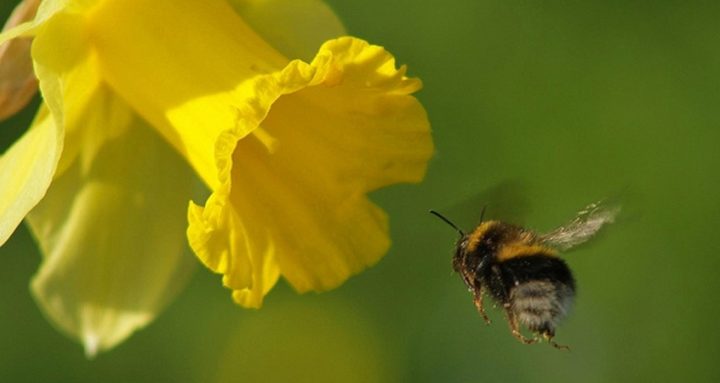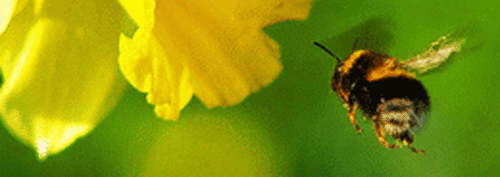Climate change and nature
Drying land, acidifying seas - how will climate change affect the natural world?

By Richard Black
@_richardblackShare
Last updated:
Global trends
Species are going extinct at a rate that may be 1,000 times faster than the natural rate, leading to warnings that we are experiencing the ‘Sixth great extinction’ in Earth history.
Climate change is one among many factors driving this trend. Others include habitat loss, wildlife trade, pollution and over-extraction. A recent assessment of 16,857 species by the International Union for the Conservation of Nature found that up to 9% of all birds, 15% of amphibians and 9% of corals are both highly vulnerable to climate change and already threatened with extinction.
The same study found that 24-50% of birds, 22-44% of amphibians and 15-32% of corals are highly vulnerable to warming of 2°C above pre-industrial levels. The global average temperature has already risen by about 0.8°C. If greenhouse gas emissions continue rising at the current rate, the UN Intergovernmental Panel on Climate Change forecasts warming of 2.6-4.8°C by 2100. A recent study found that if emissions continue rising at their record-breaking rate, one in six of the world's species faces extinction. These are global average figures; in some parts of the world, change is occurring much faster.

UK impacts
- Flowers such as snowdrops blooming, and oaks leafing, earlier in the spring
- Butterflies appearing on the wing earlier
- Migrating birds changing migration routes, breeding sites or overwintering sites
- Saltmarsh habitat inundated by sea, moors and wet grasslands drying up during hot summers
- Food shortages causing young seabirds to starve to death resulting in dramatic population declines
- The Scottish crossbill facing risk of extinction
- Ground nesting birds having nests washed away by increased flooding
Sources: RSBP and Interagency Climate Change Forum
For example, the British Comma butterfly has moved 137 miles northward in the past two decades, while geometrid moths on Mount Kinabalu in Borneo have shifted uphill by 59 metres in 42 years. Dartford warblers have been steadily moving northwards in the UK, while on the southern edge of their range, in Spain, they are declining.
Speed counts – both how fast the climate changes, and the species’ capacity to move in response. Rapid warming this century is likely to exceed the maximum speed at which many species, in many situations, can disperse or migrate.
Species occupying extensive flat landscapes are particularly vulnerable because they must disperse over longer distances to keep pace with shifting climates.
Those that are usually stationary, such as plants and corals, are especially vulnerable. For example, the Quiver tree of Southern Africa is unable to grow and disperse seeds quickly enough to keep up with a fast-changing climate.
Problems can result if species from the same natural system moving at different rates, UN research predicts that vegetation in mountain gorilla habitat will be dramatically altered by climate change. Warming will push certain plant species further up the mountains, leaving the gorillas with fewer food sources.
Marine life
Climate change and acidification are altering ocean ecosystems in profound ways. Water temperatures are rising, the ocean is slowly turning more acidic as it absorbs carbon dioxide from the air, and areas of the ocean are becoming depleted of oxygen (hypoxia).
In many regions, fisheries will be severely affected. Fish stocks will move – this is already happening in the North Sea and other areas around the UK coasts, for example.
Impacts of climate change and acidification are exacerbated by other factors such as overfishing, habitat loss and pollution. Coral reef ecosystems are declining rapidly, with the risk of potential collapse of some coastal fisheries.
Bees, trees and carbon
Climate change is affecting pollinators such as bees, which provide a vital ecosystem service in maintaining wild plants and many food crops. The UN Intergovernmental Panel on Climate Change concludes that ‘after land-use changes, climate change is regarded as the second most relevant factor responsible for the decline of pollinators’.
Forests in temperate regions such as Europe and North America are showing signs of climate stress, with changes in the frequency of fires, insect damage and outbreak of disease. Heatwaves, drought and other extreme events also have an impact.
The extensive forest fires in Russia during the exceptionally hot and dry summer of 2010 are one example. Forests and trees play a critical role in the water cycle, absorb CO2 from the air, and protect communities against coastal storms.
Our natural world is affected by climate change in many ways, but conserving and managing biodiversity is critical to address climate change. Soils, forests and oceans hold vast stores of carbon, and the way managed habitats are used will affect how much of that carbon is released into the atmosphere.
Europe and the UK
In Europe, by 2080 approximately 60% of plants and vertebrates (animals with a backbone or spinal column) will no longer have favourable climates within protected areas.
The UK has a broadly oceanic climate, with warm summers, mild winters and relatively high rainfall. According to the government, management of forests will need to adapt by mixing tree species and changing the timing of operations to address increased risks from pests, disease, wind and fire.
Share
